Fixed Displacement Vibration Test
Vibration test using the 1-inch (25.4mm) fixed displacement method, peak-to-peak, at a predetermined frequency for the ISTA 1A and 1B procedures. Besides, it simulates all kinds of vibration environment encountered by the product in transportation, installation and use environment, and evaluates the resistance ability of parts and whole machine facing various vibration environment.
Before you begin test
1. Weight and size Measurement
You should know the packaging:
• gross weight in pounds (kg), and
• outside dimensions (LxWxH) in Inches (mm or m)
2. Use a restraining device
A restraining device or devices shall be used with the vibration test system to:
• Prevent the test specimen from moving off the platform and
• Maintain test orientation of the packaged-product, but
• The device or devices shall not restrict the vertical motion of the test specimen during the test.
3. Calculating test time
Familiarity with the following formula is required to calculate the test duration after the frequency required to bounce the packaged-product is determined in the Vibration Test Block:

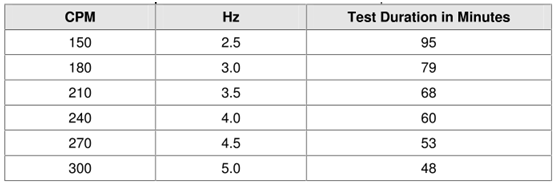
Random Vibration Test
This test method covers the random vibration testing of filled shipping units. Such tests may be used to assess the performance of a container with its interior packing and means of closure in terms of its ruggedness and the protection that it provides the contents when subjected to random vibration inputs.
Caution:
A restraining device or devices (fixturing) shall be used with the vibration test system to:
l Prevent the Top-Load from moving off the package being tested and
l Prevent the test specimen from moving off the platform and
l Maintain test orientation of the stack, but
l The device or devices shall not restrict the vertical motion of the test specimen during the test.
Grms 1.15 (ISTA 1C, 1D, 1E, 1G, 1H, 2A, 2B)
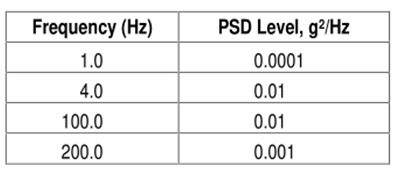

Grms 0.53 (ISTA 3A)
Over-the-road trailer simulation
The following breakpoints are for an Over-the-Road trailer typical for parcel delivery movement and shall be programmed into the vibration controller to produce the acceleration versus frequency profile (spectrum) with an overall Grms level of 0.53 (see below). The theoretical stroke required to run this vibration profile is 47.12 mm (1.855 in) peak to peak:


Grms 0.46 (ISTA 3A)
Pick-up and delivery vehicle simulation
The following breakpoints are for a pick-up and delivery vehicle and shall be programmed into the vibration controller to produce the acceleration versus frequency profile (spectrum) with an overall Grms level of 0.46 (see below). The theoretical stroke required to run this vibration profile is 58.72 mm (2.312 in) peak to peak:

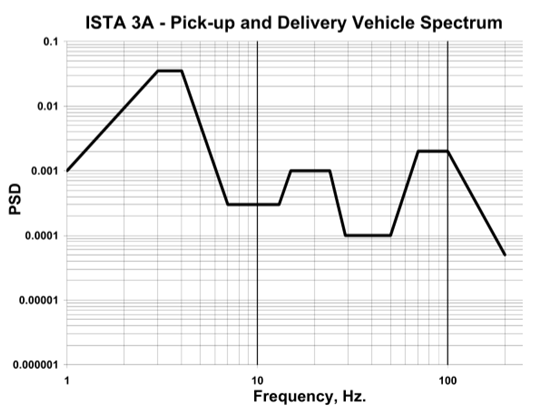
Grms 1.05 (ISTA 3A)
Spectrum for optional random vibration under low pressure
The spectrum described here is for use in Test Block 8 - OPTIONAL Random Vibration Under Low Pressure. In combination with the required low pressures,it has been shown to replicate certain leakage failures encountered in low pressure (altitude) environments. The spectrum shall be programmed into the vibration controller to produce an acceleration-versus-frequency profile with an overall level of 1.05 Grms. The theoretical stroke required to run this vibration profile is 7.52 mm (0.296 in) peak to peak.
This spectrum is to be used for Vibration Under Low Pressure only.
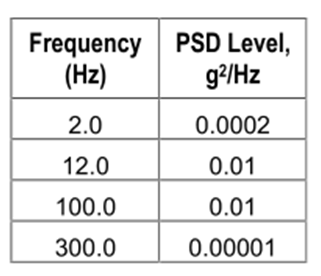
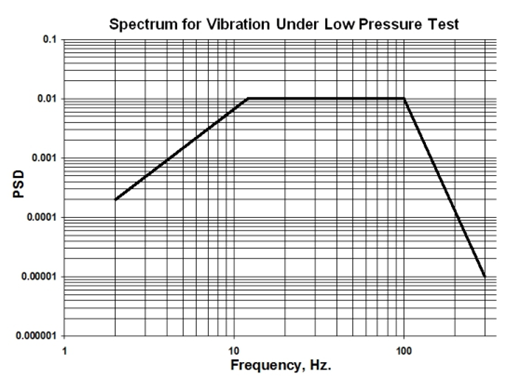
Grms 0.54 (ISTA 2C, 3H, 3B, 3E)
For Steel Spring Truck Random Vibration:
The following breakpoints shall be programmed into the vibration controller to produce the acceleration versus frequency profile (spectrum) below with an overall Grms level of 0.54. The theoretical stroke required to run this vibration profile is 45.13 mm (1.777in) peak to peak.


Grms 0.28 (ISTA 2C, 3H, 3K)
For Air-Ride Truck Random Vibration:
The following breakpoints shall be programmed into the vibration controller to produce the acceleration versus frequency profile (spectrum) below with an overall Grms level of 0.28. The theoretical stroke required to run this vibration profile is 54 mm (2.14 in) peak to peak.
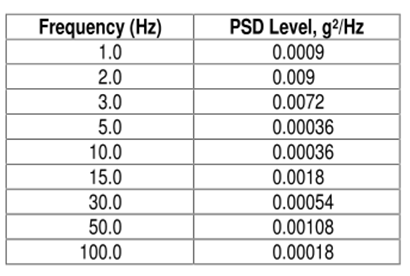
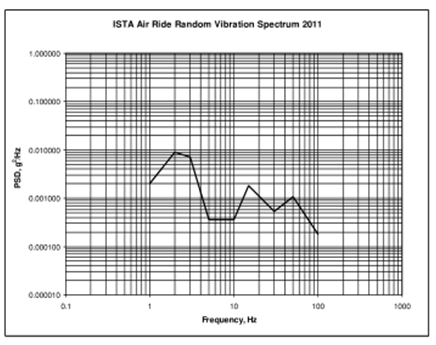
Grms 0.13 (3H)
For Railcar Random Vibration:
The following breakpoints shall be programmed into the vibration controller to produce the acceleration versus frequency profile (spectrum) below with an overall Grms level of 0.13. The theoretical stroke required to run this vibration profile is 21.26 mm (0.837in) peak to peak.

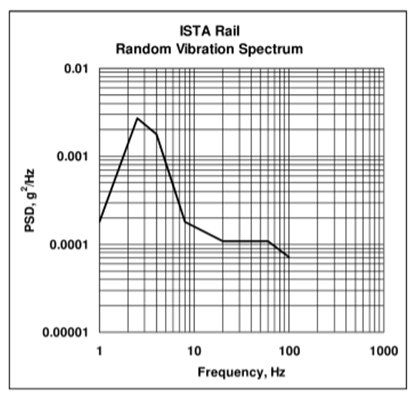
ISTA Vibration Test Equipment
CME can supply the following two test equipments to perform ISTA standard fixed displacement vibration test and random vibration test:
Fixed displacement vibration - KRD51 Transportation Bounce Test System
Random vibration - KRD70 Hydraulic Vibration Shaker

KRD51 Transportation Bounce Test System
KRD51 series transportation bounce test system is suitable for simulating constant loose cargo state during truck transport. To determine the adaptability of free bouncing, bump and friction between products or between products and the side of the truck and the bottom plate of the truck in bulk transportation and to evaluate the reliability and integrity of product structure.
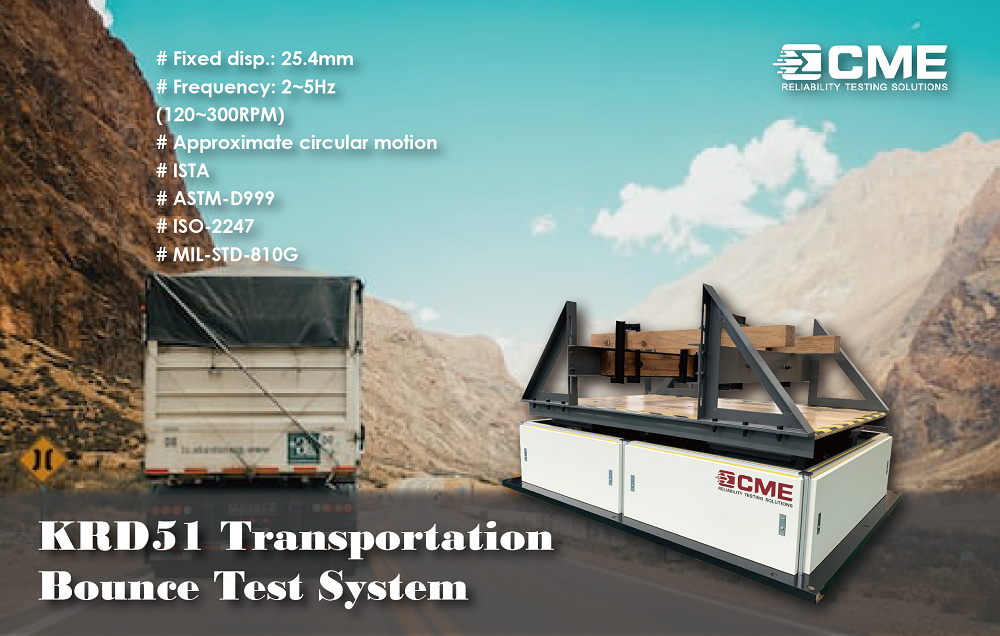
- Model: KRD51
- Maximum load (kg): 2000
- Displacement (mm): 25.4
- Frequency: 2~5Hz (120 to 300RPM)
- Test mode: Rotary
- Standards: ISTA1A, 1B, 1C, 1D, 1E, 2A, 2B, ASTMD999
- Speed up mode: adopt frequency speed-control and automatic speed increase;
- Control mode: fully automatic PLC control; free adjustment and easy operation;
- Operation mode: true color full-touch screen operation, convenient and quick;
- Motion mode: make a circular motion with a diameter of 25.4mm in the plane perpendicular to the table
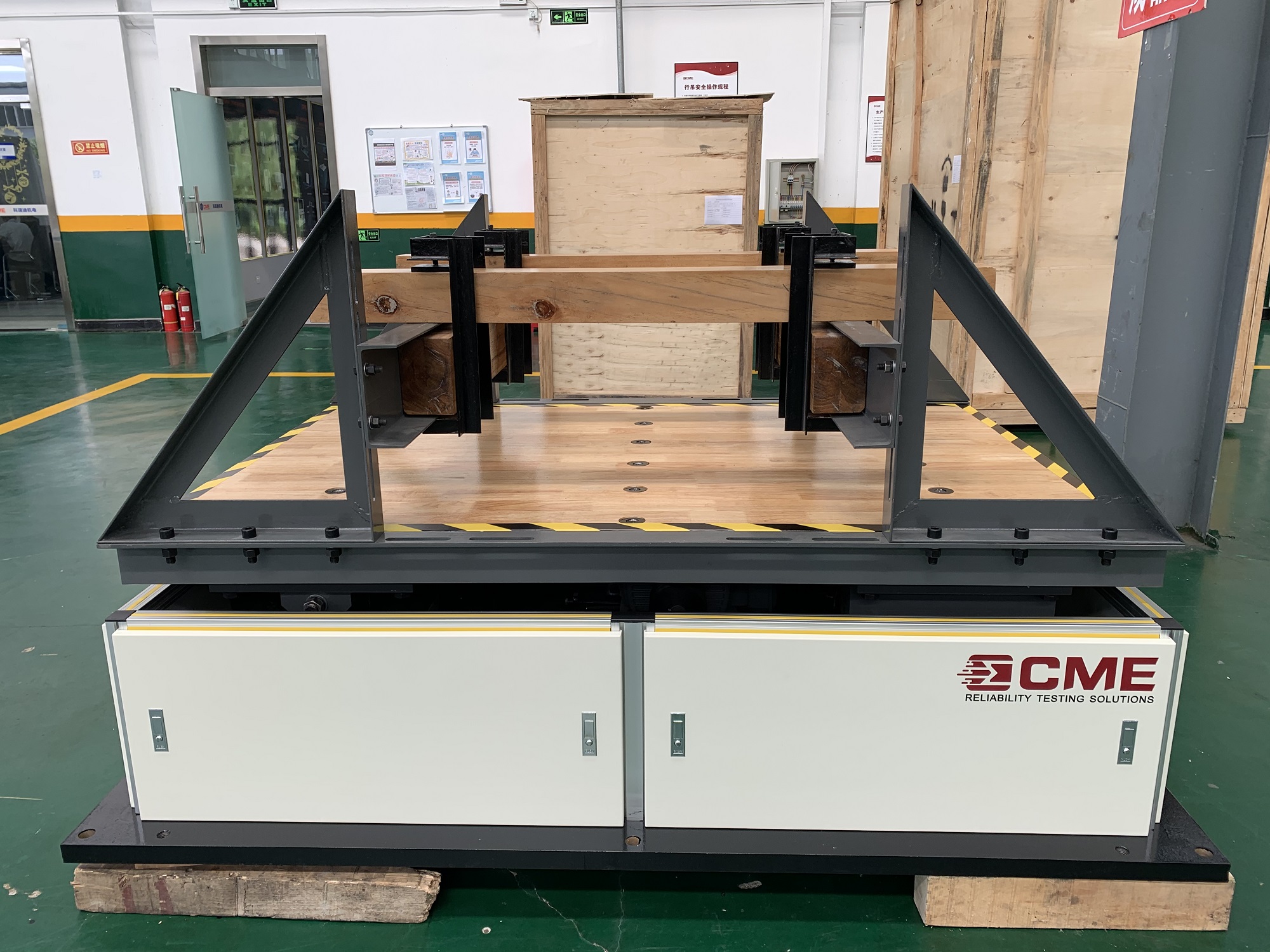
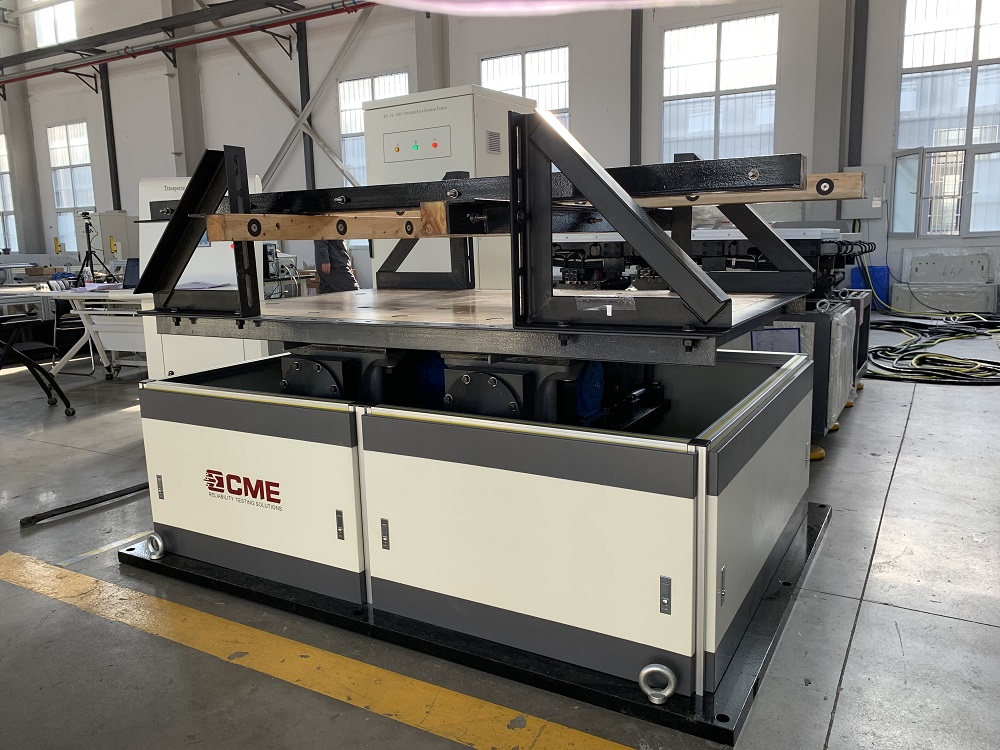
KRD70 Hydraulic Vibration Shaker
KRD70 series hydraulic vibration shaker converts the energy of high-pressure liquid into the power of the reciprocating motion of the cylinder through the electro-hydraulic servo valve. Especially suitable for vibration tests requiring low frequency and high force. It can realize sine, random, multi-point excitation and shock test (sine, random, sine on random, random on random, or resonant search & dwell). It’ s applied for reproducing the vibrations of transportation vehicles, bulk packaging products, machinery, electrical and electronic products in the actual environment, thereby optimizing the product structure and saving costs.
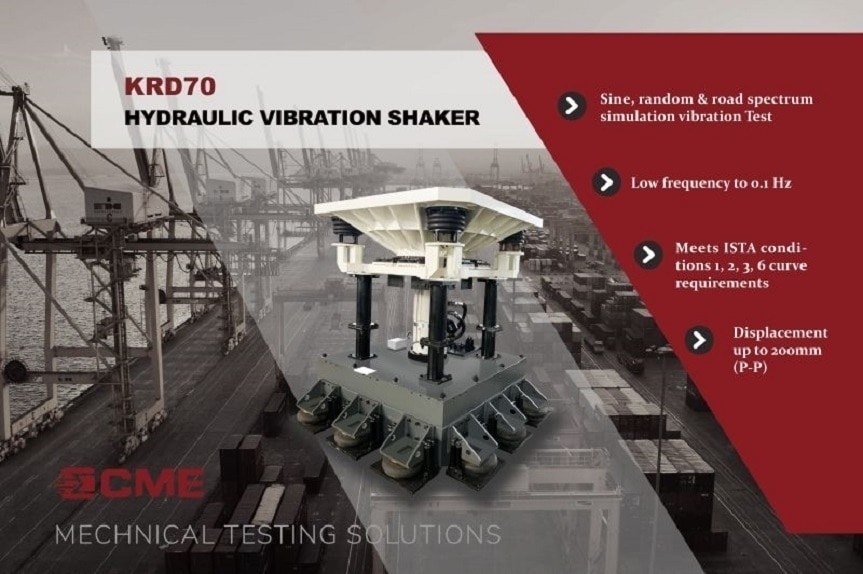
- Model: KRD70
- Max. force (KN): 500
- Max. load (Kg): 8000
- Max. acceleration (g): 5
- Vibration direction: vertical, horizontal
- Vibration mode: Sine vibration, random vibration, road spectrum simulation
- Max. displacement (P-P) (mm): 100
- Standards: 1C, 1D, 1E, 1G, 1H, 2A, 2B, 2C, 3A, 3B, 3E, 3H, ASTM D4728
Electro-hydraulic servo vibration is a control system that uses hydraulic power components as actuators, according to the principle of closed-loop feedback, which makes the output of the system track a given signal, and can transform and amplify the input. It is suitable for testing all kinds of products in aviation, marine, automotive, earthquake and other industries.

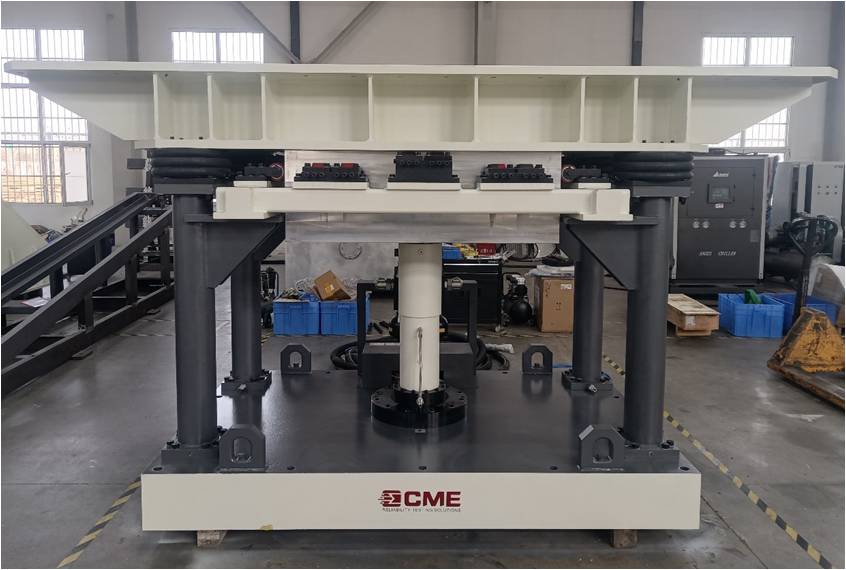
Welcome to contact us if you have any ISTA vibration testing requirements!





























































